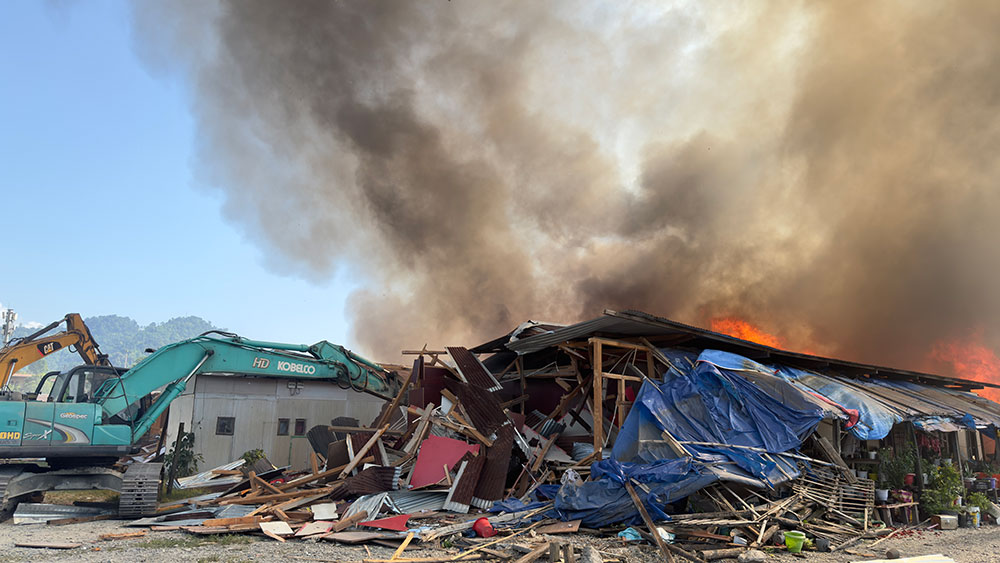Dechen Dolkar
During the fire incident at the Amochhu Temporary Shelter (ATS) in Phuentsholing on Thursday, a total of 96 units were completely destroyed.
However, no casualties have been reported.
The ATS initially comprised 1,000 units, constructed during the Covid-19 pandemic. However, 104 units were later removed by the ATS committee due to the impact of the Phuentsholing-Chamkuna highway, leaving 896 units in total.
The fire broke out at 12:30pm and is suspected to have been caused by an electrical short circuit. The fire was fully contained by 2:20pm. Mopping-up operations are currently underway.
Prime Minister Tshering Tobgay visited the site yesterday to meet with the affected families.
Phuentsholing Thrompon, Uttar Kumar Rai, said that the Thromde is providing shelter, meals, and basic necessities to the affected families for 10 days. Of the displaced families, 33 were accommodated in vacant units within the ATS, 20 were housed in school classrooms, and 43 found refuge with friends and relatives.
During the incident, the fire destroyed 64 units, while 32 units were dismantled using machinery to prevent the fire from spreading further. Later the dismantled structures also caught fire. Also, 28 units were partially damaged, and a Maruti van was destroyed.
It was reported that 16 units were unoccupied at the time of the incident.
Police, firefighters, army, de-suups, and local residents were involved in containing the blaze, with support from private companies that provided machinery.
Fire brigades and officials from Jaigaon, along with Project DANTAK, also assisted by supplying a tanker.
Most of the affected families have lost all their belongings. The families are mostly from low-income backgrounds, and donations are being solicited for their support.
The Amochhu Temporary Shelter was constructed under the command of His Majesty The King by the Royal Bhutan Army during the Covid-19 pandemic.
There were 1,999 families comprising of more than 5,000 Bhutanese who were living across the border.
The prefabricated shelters, built in record time, included two rooms, a kitchen, and a toilet, providing temporary homes for Bhutanese who had been living across the border before the gates were sealed.


